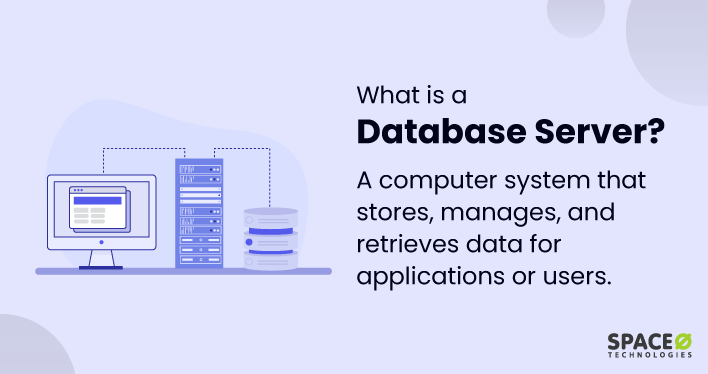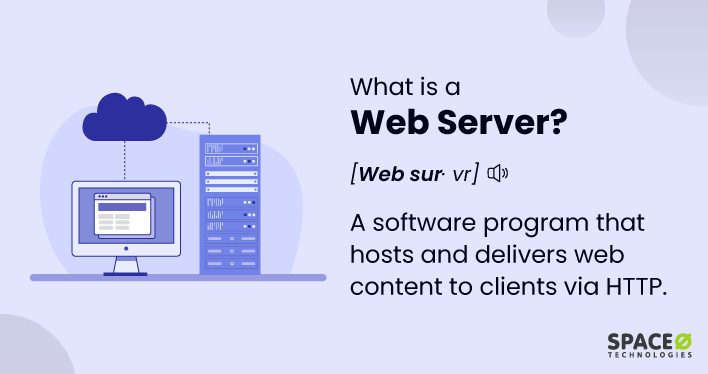Table of Contents
What is a Database Server?
A database server is a computer system that manages and provides access to databases. The database servers serve as a centralized repository for storing, organizing, and retrieving data, allowing multiple users or applications to interact with the database concurrently.
For example, MySQL is one of the widely used open-source relational database management systems (RDBMS) known for its reliability, scalability, and ease of use.
In web application architecture, database servers have a pivotal role, enabling efficient data management and facilitating data-driven decision-making. To get a deeper understanding of how these components work together in the context of web application architecture, you can refer to our guide to web application architecture.
How Does a Database Server Work?
The database servers work by receiving and processing requests from client-server or users and performing various operations on the underlying databases. In a client-server architecture, the web server plays a crucial role in mediating the communication between the client applications or users and the database server. If you’re not familiar with what a web server is, you can refer to our article on what is a web server.
Once the web server has facilitated the communication, the database server begins its operations. Here’s an overview of how a database server operates
- Request Processing: In a client-server architecture, the database server receives requests from client applications or users. These requests can include queries to retrieve data, commands to modify the database or administrative actions.
- Connection Management: The database server manages connections with client applications and a file server. It establishes and maintains communication channels to receive requests and send responses.
- Query Parsing and Optimization: When a query is received, the database server parses it to understand its structure and semantics. It then performs optimization techniques to create an efficient execution plan. This plan determines the most efficient way to retrieve or manipulate the data based on the query’s requirements.
- Data Retrieval and Manipulation: The database server interacts with the underlying database to retrieve or manipulate the requested data. It uses techniques like indexing, caching, and query execution strategies to efficiently control the required data.
- Concurrency Control: The database server handles multiple concurrent requests from different clients. To maintain data consistency, they implement concurrency control mechanisms like locking, ensuring that multiple users or applications can access and modify the data without conflicts.
- Transaction Management: The database server manages database transactions, which are units of work that consist of multiple database operations. It ensures that transactions are processed reliably, following the ACID (Atomicity, Consistency, Isolation, Durability) properties.
- Security and Access Control: The Database server enforces security measures to protect the data from unauthorized database access or modification. They authenticate and authorize users, implement encryption, and apply access control policies to ensure data privacy and integrity.
- Backup and Recovery: The data server often includes features for data backup and recovery. Regular backups are performed to create copies of the database, and recovery mechanisms are in place to restore the data in case of failures or data loss.
- Monitoring and Performance Optimization: The server continuously monitors the database performance, tracking metrics like query execution time, resource usage, and system health. Performance optimization techniques, such as index tuning, query rewriting, and caching, are applied to improve the overall efficiency and speed of data retrieval.
By performing these functions, a database server enables efficient database storage, retrieval, manipulation, and management, ensuring data consistency, security, and reliability for client applications and users.
7 Benefits of Using a Database Server
Here are the 7 benefits of using a database server for your business
- The database server provides a centralized and organized system for storing and managing data.
- Database servers ensure data integrity and consistency by enforcing rules and constraints.
- Database servers enable efficient data retrieval, allowing users to quickly access the required information.
- They support data-driven decision-making by providing access to accurate and up-to-date data.
- The database server plays a key role in providing database services by enabling concurrent access control to the data. This capability allows multiple users or a database application to work with the database simultaneously, ensuring efficient collaboration and utilization of the database services.
- They offer security mechanisms to protect sensitive data from unauthorized database access or modifications.
- Database servers facilitate scalability, allowing organizations to handle growing data volumes and increasing user demands.
In conclusion, a database server is a vital component in modern data management particularly when using database software. It serves as a central location for storing and managing data, providing efficient data access, ensuring data integrity, and facilitating a client-server model. By understanding the inner workings of database servers, their importance, and examples of popular implementations in relational databases, you can appreciate their role in enabling effective data-driven applications and decision-making processes.




